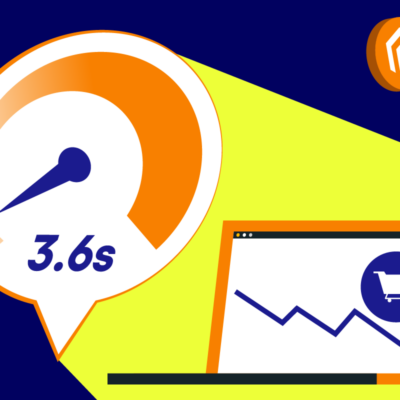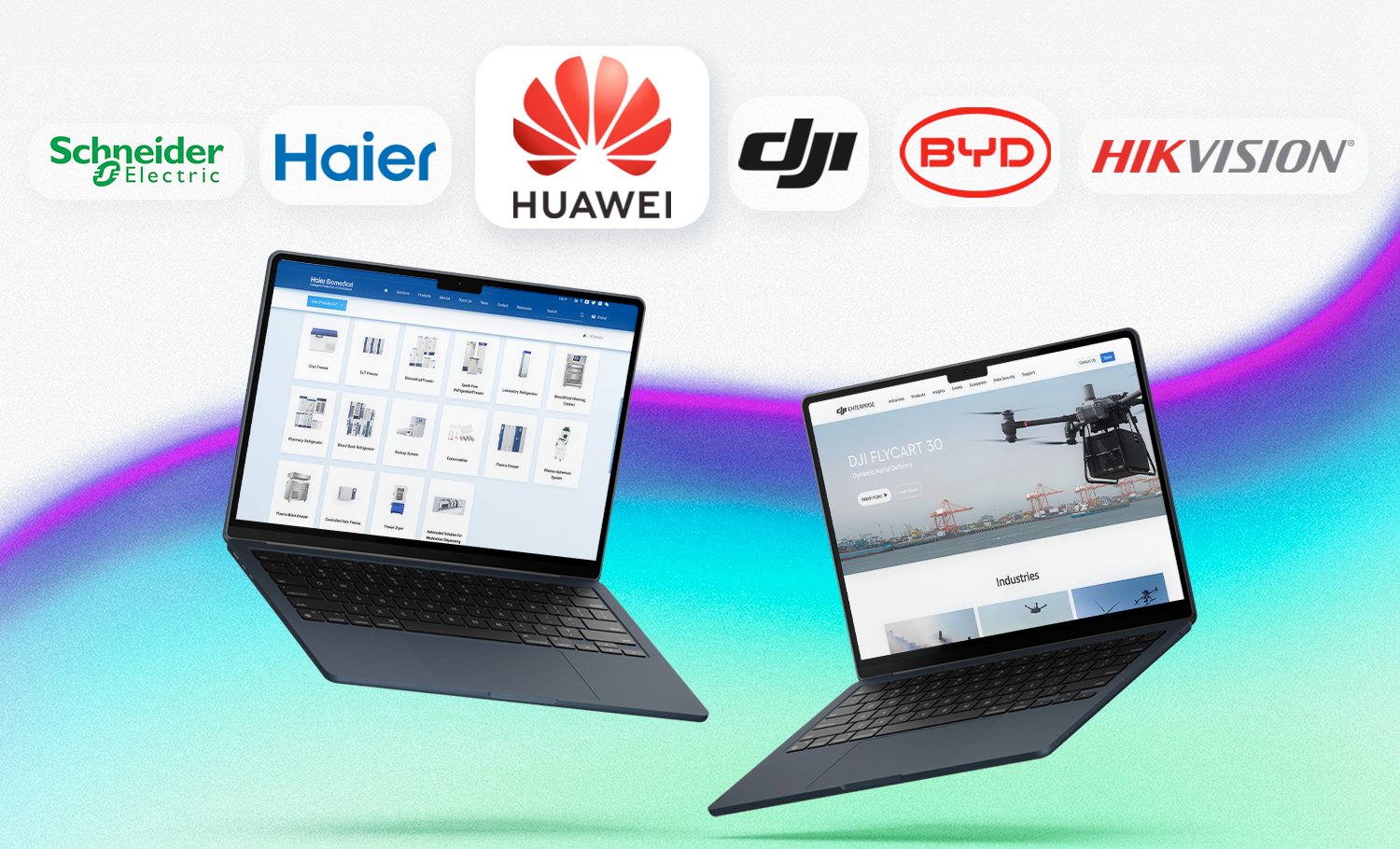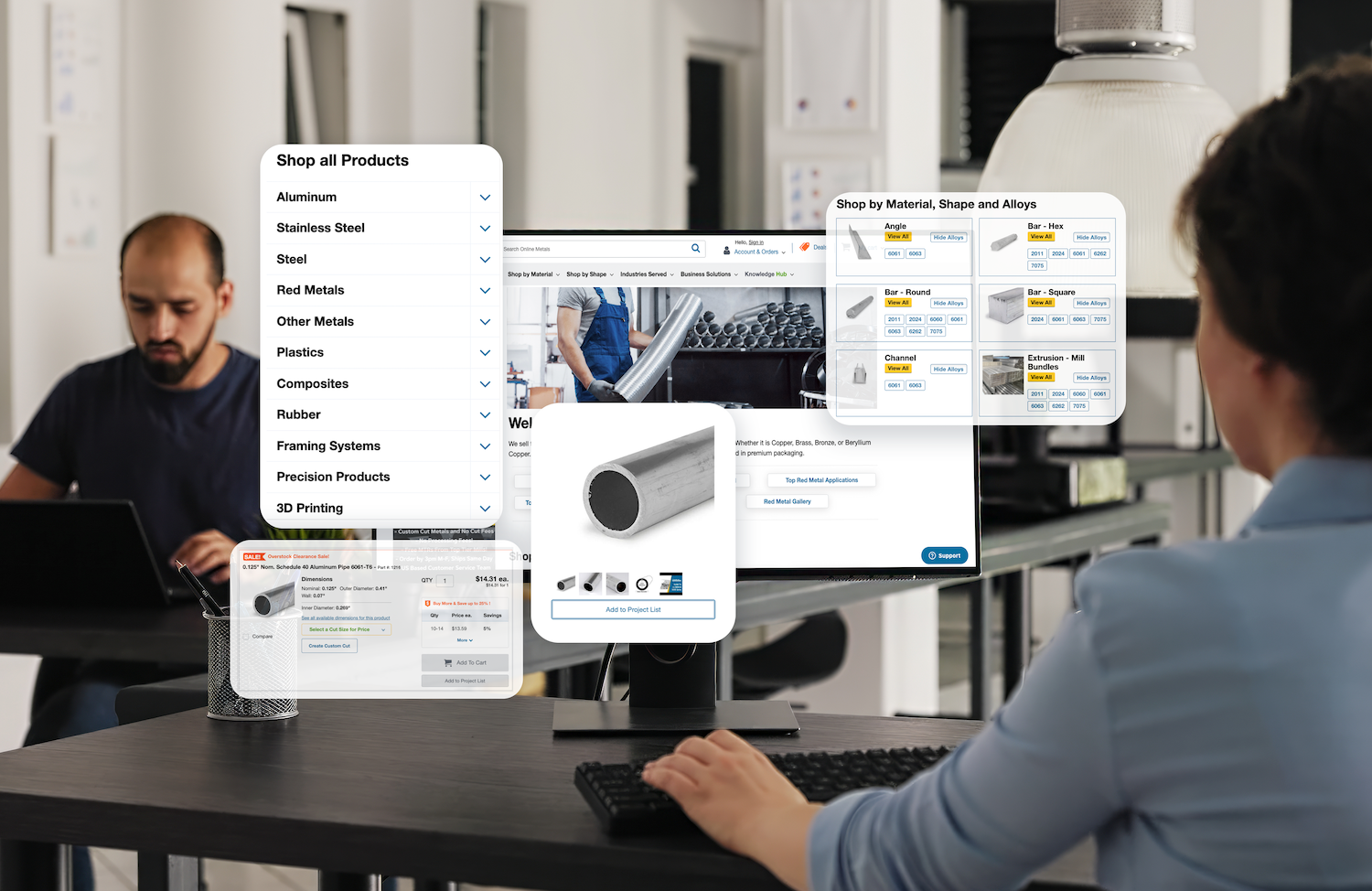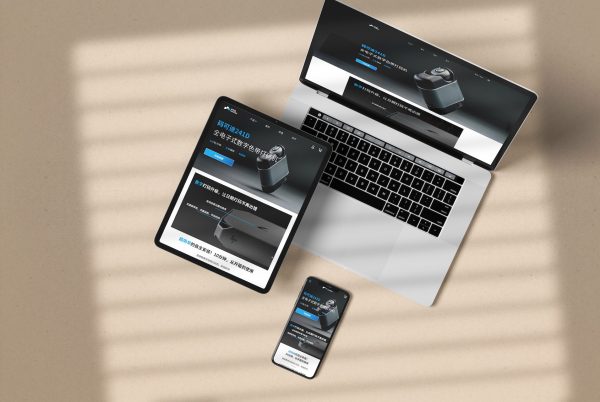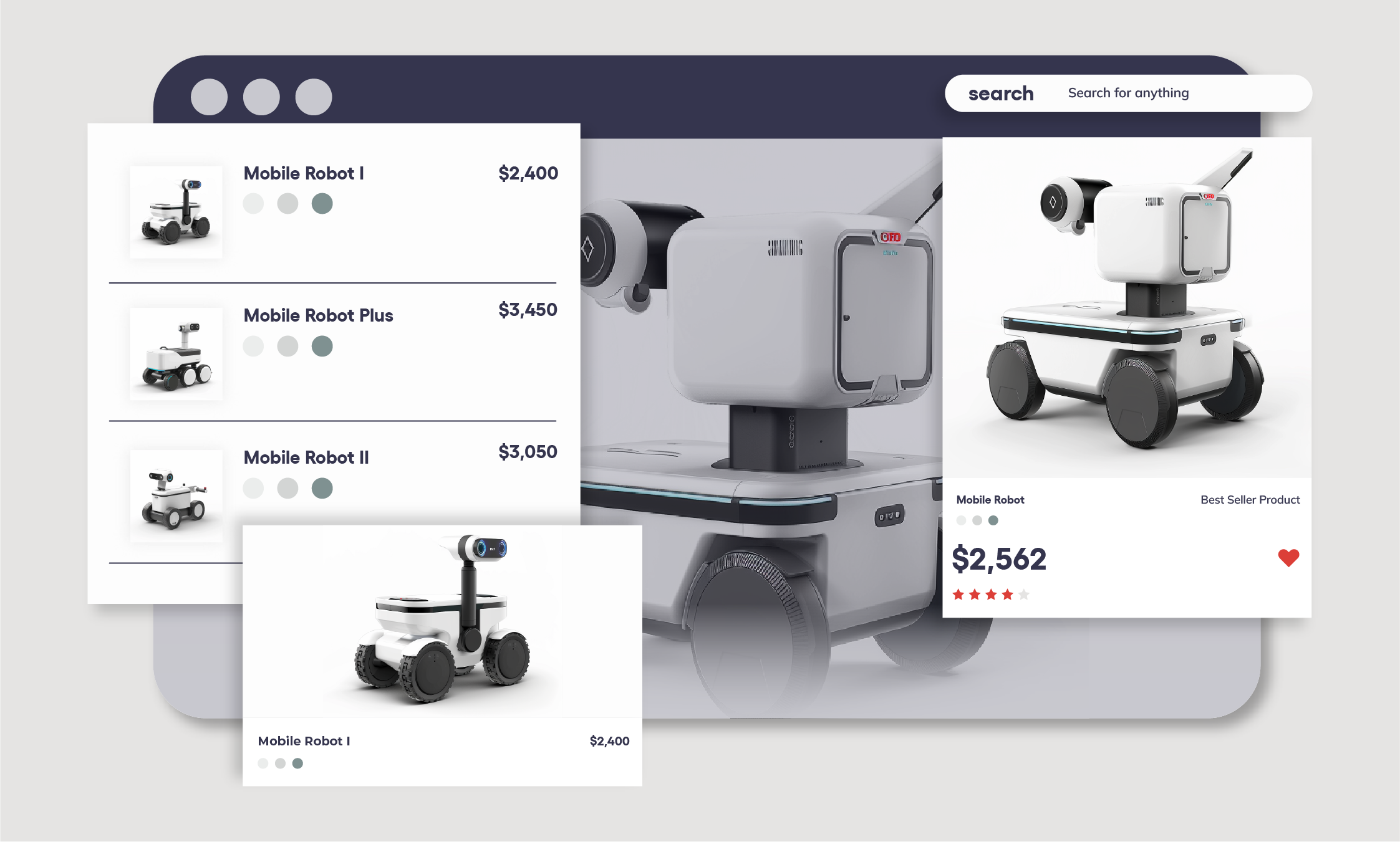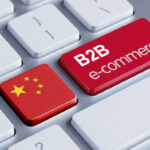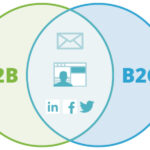If you’re here, you’ve probably already done your homework. You know that evaluating an eCommerce platform for B2B involves tackling key challenges: managing complex pricing structures, integrating with existing ERP and CRM systems, providing a seamless ordering experience for wholesale customers, and balancing operational overhead with scalability.
For a more general operational and financial perspective, read our recent blog on Shopify Plus: When does it make sense to switch?Thinking of upgrading or switching? These financial and operational considerations will help determine if Shopify Plus is a good fit or not.Shopify Plus: When does it make sense to switch?
While most acknowledge the excellence of Shopify as a B2C platform, the rise of hybrid business models and demand for flexible eCommerce solutions have driven the brand to really grow its B2B capabilities, recently adding Plus-exclusive features such as customer-specific pricing through Price Lists, streamlined account management for B2B buyers, and the ability to create multiple expansion stores for different markets or customer segments.
But, what can actually be achieved with Shopify Plus for B2B? This article will look into the scenarios where it shines, where it struggles, and whether it’s worth your investment, and help you answer key questions like:
- When do third-party solutions make sense?
- Should you opt for a blended or dedicated store model?
- Can Shopify Advanced work, or do you need Shopify Plus?
Although Shopify B2B is relatively new, it is quickly making great strides and adding new functionalities. Visit changelog.shopify.com to see the latest additions.
1. Shopify Plus B2B Models: Blended vs. Dedicated Stores
Shopify Plus offers two primary ways to set up your B2B shop, depending on whether your eCommerce operation includes wholesale along retail sales. This has important implications depending on your business model given some platform features cannot differentiate between B2B and B2C orders, and as such can impact customer notifications, orders (think discounts and gift cards), and reports.
TMO's Shopify Development Services include Audit, Redesign, Custom Development, Migration, and SEO to help you make the most out of your investment.
Blended Stores
The blended model allows you to manage both B2B and D2C customers within the same store. If your workflows, user journey, and settings are not too different for both types of customers, then choosing Blended is a great way to streamline your operation since you can maintain order data and easily manage your store in one place.
Pros:
- Centralized management of inventory, orders, and customer data.
- Lower operational overhead compared to maintaining separate stores.
Cons:
- Difficult to offer differentiated pricing and experiences for B2B customers without custom development or apps.
- UX compromises: Your D2C experience may suffer if tailored too much for wholesale buyers, or vice-versa.
Furthermore, functionalities like discount codes, gift cards, customer login pages, and Shopify Scripts apply to both B2B and D2C customers, and while some of the potential constraints that come with the blended model can be circumvented through custom development or by reaching out to Shopify Support, depending on the magnitude of customization requirements you might be better off by opening a dedicated store.
Dedicated Stores
A dedicated model involves creating a separate store for B2B customers using Expansion Stores, another Shopify Plus-only feature. This gives you the flexibility to further customize the shopping experience for your business purchasers without worrying about compromising the experience for other user segments.
Pros:
- Fully customizable B2B experience, including theme, pricing, UX, and navigation.
- Easier to separate analytics reporting as well as inventory systems.
- Easier to implement complex workflows like purchase approvals and terms-based payments.
Cons:
- Higher costs: You’ll need to maintain two stores, which can double integration or app fees, and development overhead.
- Syncing issues: Managing product catalogs, inventory, and customer data across two stores can become a logistical challenge.
However, setting up a new dedicated store will also entail additional work to configure, integrate, and manage it separately. This is something to consider although it might not be a cons depending on your current operation and business needs.
2. Leveraging Shopify Scripts and Theme Development for B2B
For businesses with unique B2B needs, Shopify Scripts can further help you customize your user experience with a bit of development (note that under a blended setup scripts will affect both B2B and B2C users) as well as editing the theme's code to tailor your B2B experience (for blended, the customer.b2b liquid variable can also help with customization.
Additionally, while Shopify Functions provide flexibility, significant customization may still require experienced developers—especially when integrating with ERPs or CRMs—and even then, there are some notable development restrictions as of now:
- Shopify Scripts Limitations: While Shopify Scripts can be used for discounts and line item adjustments, they cannot currently differentiate between B2B and D2C customers without custom development. Additionally, shipping or payment scripts are not supported for B2B orders.
- API Readiness: Although Shopify has introduced the Business Customer API, which allows merchants to query and manage B2B-specific data like companies, locations, and contacts, it’s still evolving. Some APIs may not yet fully support complex B2B operations.
- Checkout Customizations: Unlike B2C stores where checkout.liquid allows deep customization of the checkout process, Shopify B2B does not currently support checkout customizations for B2B customers.
There are usually ways around these limitations, and TMO's team has vast experience fulfilling complex B2B requirements through custom app development. Reach out to us for a consultation!
3. Native B2B Features vs. Third-Party Apps
In the end, Shopify Plus is excellent for B2B because it can save time and money in the long run with an efficient and centralized operation that requires little coding to implement and configure and powerful functionalities out-of-the-box. Some of the tools top native B2B Features are:
- Checkout Customization: With access to checkout.liquid, Shopify Plus merchants can create tailored checkout flows for B2B customers.
- Price Lists and Customer Segmentation: Assign different price lists to different customer groups.
- Automation: Tools like Shopify Flow and Launchpad help automate order approvals, special promotions, and bulk pricing changes.
While it would be ideal to fulfill all your business and operational requirements through built-in functionalities, Shopify Plus offers powerful native features, it’s not uncommon to need third-party apps for more specific use cases.
Evaluating eCommerce solutions for your brand? TMO specializes in building bespoke B2B eCommerce Solutions using other development frameworks such as Magento (Adobe Commerce).
If you are limited in any way or simply if the cost already negates the feasibility of Shopify Plus, there are tons of options on Shopify’s App Store (including Plus-certified extensions) to help extend functionality (or work your way around implementing B2B on a lower Shopify plan), although the idealness of this will be dependent on your specific use case, and every additional third-party app may limit inter-compatibility across your implementation.
One thing is for certain, you don’t want to find yourself in a “hacky” B2B implementation that doesn’t play well down the line with other integrations, systems, payment, shipment, etc. Over-reliance on apps can increase costs and lead to compatibility issues as your tech stack grows and in the end, although the price jump from Shopify Advanced to Plus is quite high, the seamlessness in the long run is something to ponder.
4. What to Consider Before Choosing Shopify Plus for B2B
Before committing to Shopify Plus, it’s crucial to understand not just the benefits but also the limitations and practical considerations that can impact your B2B operations. Here are the key factors to evaluate:
Feature Limitations
- Customization Constraints: While Shopify Plus provides enhanced customization options, it’s still a hosted platform, limiting full control over backend functionality and data ownership compared to open-source solutions like Magento.
- Complex Catalogs and Line Item Limits: Shopify B2B has a maximum order limit of 500 line items. This means if a customer attempts to order more than 500 different products or variants in one order, it will fail. For businesses dealing with large, complex catalogs, this can pose significant challenges.
- Subscription Incompatibility: Subscriptions are not natively supported for B2B orders. If your B2B model relies heavily on recurring orders, you may need third-party apps, which can add complexity and costs.
- Unsupported Features: Shopify B2B currently lacks certain functionalities such as local delivery, tipping options, and the ability to offer non-physical products like services or digital goods.
Cost Considerations
- Operational Overhead: If your B2B operations require a dedicated store to separate wholesale and retail experiences, you’ll face higher operational costs. This includes maintaining separate product catalogs, managing inventory syncing, and handling different customer databases.
- Third-Party Apps: While third-party apps can fill functionality gaps, relying heavily on them increases costs and operational complexity. Additionally, not all apps are fully compatible with Shopify B2B yet, which can lead to unexpected issues.
Scalability vs. Complexity
- Shopify B2B offers significant potential for scaling, especially for businesses looking to manage both B2B and D2C operations from a unified platform. However, businesses with highly specific or complex B2B needs may find certain limitations restrictive, requiring workarounds or custom solutions.
By carefully evaluating these factors and understanding both the potential and the pitfalls, you can make a more informed decision on whether Shopify Plus is the right fit for your B2B business.
5. Alternative B2B Setups Using Shopify
While we the scenarios covered above focus on standard implementations, the reality is that many brands have also gone for—and thrived on—alternative routes that still take the best out of Shopify (both Shopify Plus and lower tiers) to make the most out of their B2B solution. Let's look at some alternative setups that we at TMO have previously worked with:
Option 1: D2C on Shopify, B2B on a Separate Platform
Brands doing multichannel sales (such as a mixed B2C and B2B model, Channel and Field Sales, etc.) or with too complex requirements might find themselves in a situation where they’re “forcing” an implementation into a single system, and potentially compromising UX for certain B2B users, like for example smaller purchasers. If your B2B workflows are super complex, both your operation and ROI might be better off working with a dedicated—separate—solution and integrating both systems individually into your ERP.
- Ideal for businesses with highly complex B2B requirements.
- Pros: Flexibility and specialization.
- Cons: Higher maintenance costs and potential integration issues.
Option 2: Shopify Plus + Expansion Stores
Shopify Plus supports nine expansion stores for internationalization, separate physical locations, and other related purposes. So, rather than using a blended D2C-B2B store, you can separate your lines of business into different stores and use the native B2B functionalities or third-party integrations accordingly to meet your business needs. Remember, Shopify Plus still brings a lot more to the table than strictly B2B functions.
- Use Shopify Plus expansion stores for different lines of business or regions.
- Pros: Allows tailored experiences without needing a separate platform.
- Cons: Higher operational complexity compared to a single blended store.
Option 3: Two Shopify Advanced Stores
For operations that are still bringing in smaller revenue numbers, one solution albeit not the optimal one is to set up two independent Shopify plans where one is D2C and the other uses extensions to fulfill B2B requirements. The downsides are that you then have double Shopify fees, double third-party app fees for whichever apps you need on both stores, there is an increased overhead with development and theme maintenance, and you have to sync products, inventory, and customers (if you want to). There are other little caveats that you will find along the way too, but this could be a potential middle ground that can also pave the way for a future Shopify Plus adoption.
- Lower upfront cost compared to Shopify Plus.
- Cons: Double the fees, increased app costs, and syncing headaches.
6. Conclusion: Is Shopify Plus Worth It for B2B?
Shopify Plus can still be a powerful B2B solution if its features align with your business needs, and apart from the strictly B2B capabilities it absolutely packs a lot when it comes to UX optimization, server loads, and more. However, it comes at a price and there's no One-Size-Fits-All when it comes to B2B. On the other hand, Shopify Advanced may suffice for smaller operations or simpler models but has limitations that could hinder scaling.
Final Advice: If you’re on the fence, list your must-have B2B features and calculate the total cost of ownership (TCO) to compare Shopify Plus, Shopify Advanced, and alternative platforms.
Are you still unsure on which path to take? Contact TMO for a no-nonsense consultation. As a Shopify-certified partner with vast experience in B2B eCommerce, we’ve worked with numerous platforms, including Shopify Plus, Shopify Advanced, and Magento. Our expertise in building scalable solutions tailored to your unique business needs ensures you get the most out of your investment. We’ll help you determine the right eCommerce solution for your B2B business!

